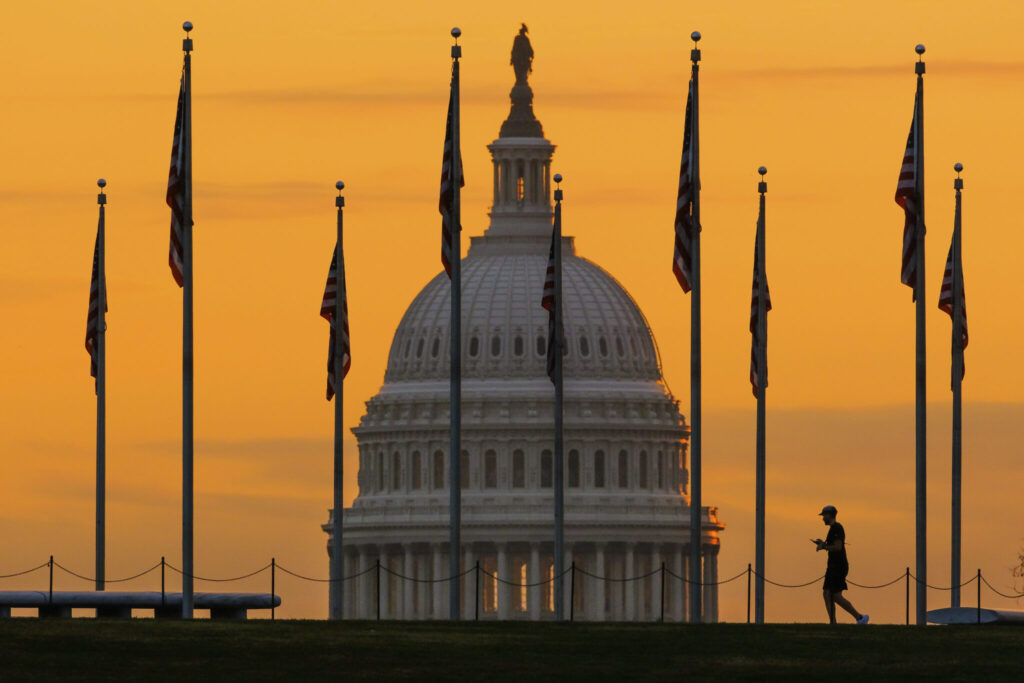Fitch Ratings cut the credit rating of the U.S. government. One of the reasons was the repeated standoffs in Congress about whether to default on the U.S. debt. The downgrade strikes at the core of the global financial system because U.S. Treasurys are considered some of the safest possible investments on Earth. Here’s what you need to know, as reported by the Associated Press:
US Govt’s debt has been downgraded. Here’s what to know
Newslooks- WASHINGTON (AP)
Late Tuesday, Fitch Ratings became the second of the three major credit-rating firms to remove its coveted triple-A assessment of the United States government’s credit worthiness, a move that contributed to sharply lower stock prices in Wednesday trading.
Fitch cited the federal government’s rising debt burden and the political difficulties that the U.S. government has had in addressing spending and tax policies as the principal reasons for reducing its rating from AAA to AA+.
Fitch said its decision “reflects the expected fiscal deterioration over the next three years, a high and growing general government debt burden, and the erosion of governance” compared with other countries with similar debt ratings.

The downgrade may have little impact on financial markets long-term or on the interest rates the U.S. government will pay. Here’s what you need to know:
HOW DID THE GOVERNMENT GET TO THIS POINT?
Fitch’s move comes just weeks after the White House and Congress resolved a standoff on whether to raise the government’s borrowing limit. An agreement reached in late May suspended the debt limit for two years and cut about $1.5 trillion in spending over the next decade. The agreement came after negotiations approached a cutoff date after which Treasury Secretary Janet Yellen had warned the government would default on its debt.
The Biden administration reacted angrily to the move. Yellen said Wednesday that Fitch’s “flawed assessment is based on outdated data and fails to reflect improvements across a range of indicators, including those related to governance, that we’ve seen over the past two and a half years.”
“Despite the gridlock, we have seen both parties come together to pass legislation to resolve the debt limit,” Yellen said.
Standard & Poor’s removed its coveted triple-A rating of U.S. debt in 2011, after a similar standoff over the borrowing limit.
Fitch said that the ratio of U.S. government debt relative to the size of its economy will likely rise from nearly 113% this year to more than 118% in 2025, which it said is more than two-and-a-half times higher than is typically the case for governments with triple-A and even double-A ratings.
WHAT TYPICALLY HAPPENS WHEN DEBT IS DOWNGRADED?
Ratings agencies like Fitch and its counterparts, Standard & Poor’s and Moody’s Investors Service, rate all kinds of corporate and government debt, ranging from local government bonds to debt issued by huge banks.
In general, when an issuer of debt has its credit rating downgraded, that often means it has to pay a higher interest rate to compensate for the potentially higher risk of default it poses.
WHAT COULD THAT MEAN FOR U.S. TAXPAYERS?
Many pension funds and other investment vehicles are required to only hold investments with high credit ratings. If a city or state, for example, sees its credit rating fall too low, those investment funds would have to sell any holdings of those bonds. That would force the government issuing those bonds to pay a higher interest rate on its future bonds to attract other investors.
If that were to happen to U.S. Treasury securities, the federal government could be required to pay higher interest rates, which would push up interest costs for the government and taxpayers.
WILL U.S. BORROWING COSTS RISE?
Few economists think that such an outcome will actually occur. Instead, they think Fitch’s downgrade will have little impact. Few pension funds are limited to holding just triple-A rated debt, according to Goldman Sachs, which means the current AA+ from Fitch and Standard & Poor’s will be sufficient to maintain demand for Treasurys.
“We do not believe there are any meaningful holders of Treasury securities who will be forced to sell due to a downgrade,” Alec Phillips, chief political economist for Goldman Sachs, wrote in a research note.
Large U.S. banks that are required by regulators to hold Treasurys won’t see any changes in those rules just because of the downgrade, Phillips added in an interview, because regulators will still see them as safe investments.
For most investors, U.S. Treasury securities are essentially in a class by themselves. The U.S. government bond market is the largest in the world, which makes it easy for investors to buy and sell Treasurys as needed. The United States’ large economy and historic political stability has led many investors to see Treasurys as nearly the equivalent of cash.
Rating agency downgrades typically have more impact on smaller, lesser-know debt issuers, such as municipal governments. In those cases, even large investors may not have much information about the creditworthiness of the bond and are more reliant on the ratings agencies, Phillips said.
Yet that isn’t really the case for Treasury bonds and notes, he said. Large investment funds and banks form their own opinions about Treasury securities and don’t rely on the ratings agencies, he said. Fitch’s analysis also didn’t provide much new information, he added. Other entities, such as the nonpartisan Congressional Budget Office, have made similar projections about where U.S. government debt is headed.
“Nobody’s holding Treasuries because of the ratings,” Phillips added.
WHAT DOES FITCH MEAN BY ‘GOVERNANCE’?
Fitch cited a decline in “governance” as a key reason for its downgrade, a reference to the repeated battles in Washington over the past two decades that have led to government shutdowns or even taken the government to the brink of a debt default.
“The repeated debt-limit political standoffs and last-minute resolutions have eroded confidence in fiscal management,” Fitch said.
At the same time, Fitch is referring to the inability of even compromise legislation to meaningfully address the long-term drivers of federal government debt, specifically entitlement programs for the elderly such as Social Security and Medicaid.
“There has been only limited progress in tackling medium-term challenges related to rising social security and Medicare costs due to an aging population,” Fitch said.







